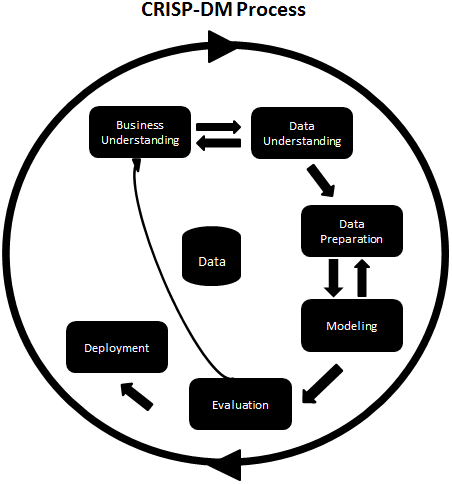CRISP-DM's full form is CRoss-InduStry Process for Data Mining. CRISP-DM is a well-defined, well-structured, and well-proven process for machine learning, data mining, and business intelligence projects. It is a robust, flexible, cyclic, useful, and practical approach to solving business problems. The process discovers hidden valuable information or patterns from several databases. The CRISP-DM process has six major phases:
- Business Understanding: In this first phase, the main objective is to understand the business scenario and requirements for designing an analytical goal and initial action plan.
- Data Understanding: In this phase, the main objective is to understand the data and its collection process, perform data quality checks, and gain initial insights.
- Data Preparation: In this phase, the main objective is to prepare analytics-ready data. This involves handling missing values, outlier detection and handling, normalizing data, and feature engineering. This phase is the most time-consuming for data scientists/analysts.
- Modeling: This is the most exciting phase of the whole process since this is where you design the model for prediction purposes. First, the analyst needs to decide on the modeling technique and develop models based on data.
- Evaluation: Once the model has been developed, it's time to assess and test the model's performance on validation and test data using model evaluation measures such as MSE, RMSE, R-Square for regression and accuracy, precision, recall, and the F1-measure.
- Deployment: In this final phase, the model that was chosen in the previous step will be deployed to the production environment. This requires a team effort from data scientists, software developers, DevOps experts, and business professionals.
The following diagram shows the full cycle of the CRISP-DM process:

The standard process focuses on discovering insights and making interpretations in the form of a story, while KDD focuses on data-driven pattern discovery and visualizing this. SEMMA majorly focuses on model building tasks, while CRISP-DM focuses on business understanding and deployment. Now that we know about some of the processes surrounding data analysis, let's compare data analysis and data science to find out how they are related, as well as what makes them different from one other.













































































